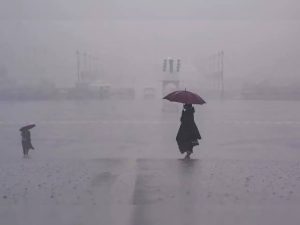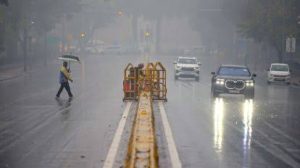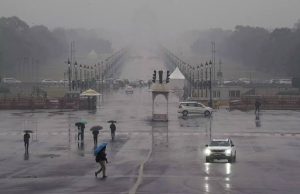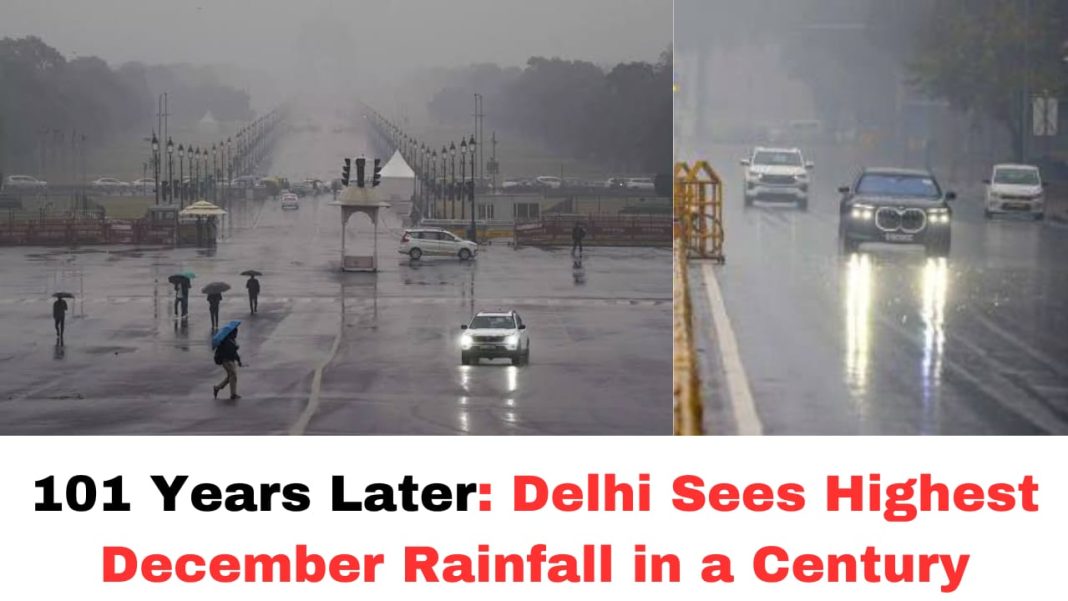Digital News Guru New Delhi Desk:
Delhi Rain: Unprecedented Weather Patterns and Record-Breaking Rainfall
Delhi, the heart of India, is witnessing an extraordinary weather event that has caught the attention of meteorologists and residents alike. Heavy rainfall in December, an unusual occurrence for the city, has shattered decades-old records, bringing with it a significant drop in temperatures and disrupting daily life.
- Record-Breaking Rainfall: In the 24 hours leading up to 8:30 am on Saturday, December 28, 2024, Delhi recorded 41.2 mm of rain—the highest single-day December rainfall in 101 years.
- Monthly Total: This brings the total December rainfall to 42.8 mm, marking the highest for this month in the past 15 years.

- Temperature Drop: The heavy rainfall has led to a significant drop in temperatures, intensifying the cold wave gripping the capital.
- Forecast: The India Meteorological Department (IMD) predicts generally cloudy skies with light to moderate rain, thundershowers, and occasional lightning in the coming days.
- Advisory: Residents are advised to remain indoors, secure windows and doors, and avoid unnecessary travel. The IMD has issued a Red Warning for Fog, in effect until Sunday, 5:00 AM IST, indicating very dense fog likely at isolated places over Punjab, Haryana, Chandigarh, and Rajasthan.
A Record-Breaking Downpour
On December 28, 2024, Delhi recorded a staggering 41.2 mm of rainfall within 24 hours, the highest single-day December rainfall in 101 years. This remarkable weather phenomenon has catapulted December 2024 into the history books, with the total rainfall for the month reaching 42.8 mm, the highest in 15 years. The Indian Meteorological Department (IMD) has attributed this anomaly to a combination of westerly disturbances and localized weather conditions.
Impacts on Daily Life
The sudden downpour brought life in Delhi to a standstill, causing waterlogging in several areas and traffic congestion on key roads. Public transportation faced delays, with buses and trains struggling to maintain their schedules amidst the deluge. In residential areas, water seeped into homes, raising concerns over infrastructure resilience and preparedness for such unexpected events.

Air travel was also disrupted, with flights delayed or diverted due to poor visibility. The dense fog that accompanied the rain worsened the situation, as visibility dropped to as low as 50 meters in some areas.
Temperature Plunge and Cold Wave
The heavy rain and overcast skies resulted in a sharp decline in temperatures, intensifying the ongoing cold wave in the region. Daytime temperatures plummeted to around 16°C (60°F), a significant drop from the seasonal average. Nights became chillier, with temperatures hovering around 10°C (50°F). The IMD has issued warnings about the cold wave, advising residents to take precautions, especially the elderly and children, who are more vulnerable to the sudden cold.
Fog Warnings and Visibility Issues
Adding to the challenges posed by the rain is the dense fog blanketing the city. The IMD has issued a red warning for fog, predicting very dense fog conditions over Punjab, Haryana, Chandigarh, and Rajasthan, including Delhi. The reduced visibility has led to slower vehicular movement on highways, increasing the risk of accidents. Motorists have been advised to use fog lights and drive cautiously.
Expert Insights on Unusual Weather
Meteorologists explain that the current weather anomaly is driven by an intense western disturbance, a phenomenon involving moist air from the Mediterranean region interacting with the cold air over northwestern India. Such disturbances are common in winter but rarely result in such heavy rainfall in Delhi during December. Experts also point to global climate change as a factor contributing to the increased frequency and intensity of such events.
The IMD has also highlighted the possibility of more rain and thunderstorms in the coming days. While the immediate forecast includes light to moderate showers, occasional thundershowers and lightning strikes are expected to persist, keeping the weather cloudy and chilly.
Government and Public Advisory
In response to the situation, authorities have issued several advisories. The IMD has urged residents to avoid unnecessary travel and stay indoors. Precautions like securing windows and doors, using fog lights while driving, and staying updated on weather forecasts have been emphasized.

Schools and offices are also taking measures to ensure safety, with some institutions opting for remote work or study options. Additionally, Delhi’s civic authorities are working overtime to address waterlogging and clear clogged drains, though the scale of the problem poses a significant challenge.
Conclusion
Delhi’s record-breaking December rain has been a wake-up call for residents, authorities, and policymakers. While the immediate focus remains on managing the impacts of this weather event, the broader message is clear: preparedness and resilience must be at the forefront of urban planning and governance. As Delhi grapples with the challenges of heavy rain and cold, the city must also look ahead, adapting to a future where such anomalies may become more frequent.
You May Also Read: ED Summons K.T. Rama Rao in Formula E Race Case asking to appear on Jan.7








